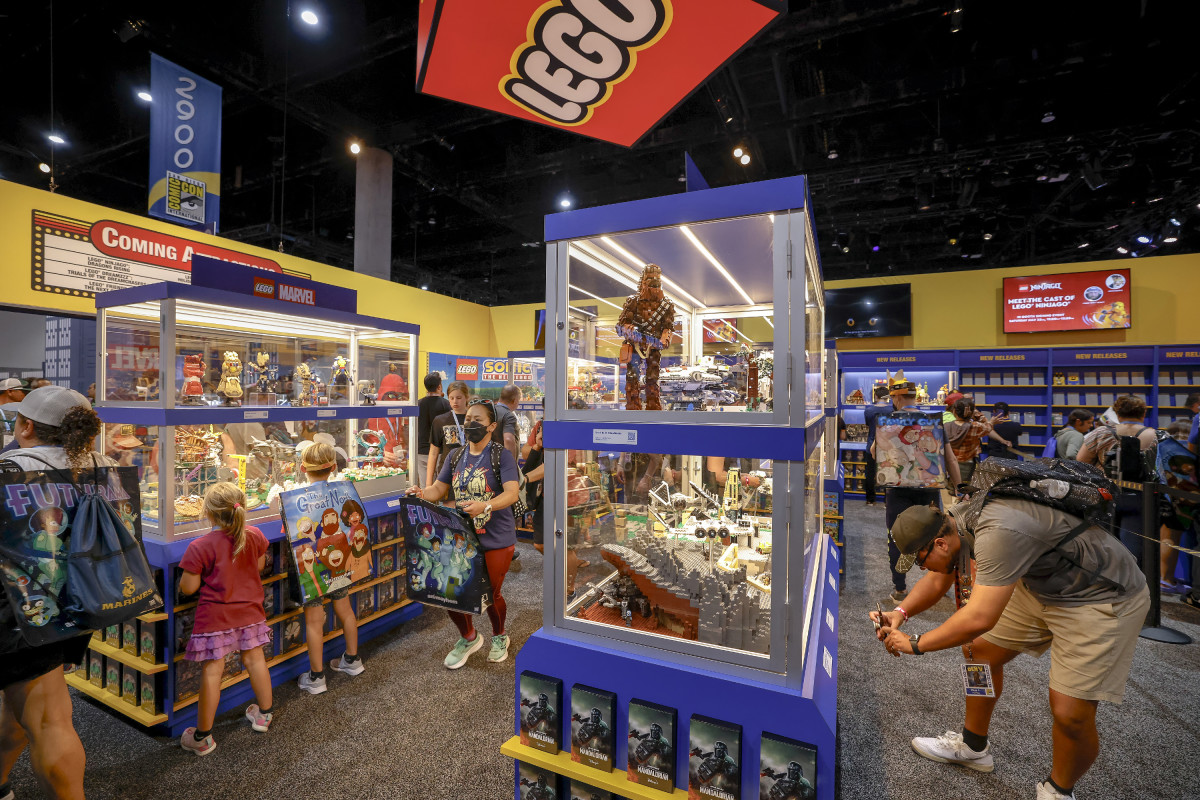
In 1932, Ole Kirk Christiansen, a carpenter from Billund, Denmark, began making wooden toys.
A few years later, his company would be called "Lego", which comes from a Danish phrase meaning "play well." Lego, which operates under the motto, "Only the Best is Good Enough," expanded to plastic toys in 1947.
Related: Hollywood writers reach tentative strike deal with studios; media stocks higher
The company continued to grow—big time—and in 2015, marketing consulting company Brand Finance ranked Lego as the "world's most powerful brand", overtaking Ferrari.
More than 220 million Lego sets are sold around the world each year, and in 2022 Lego reported more than $9 billion in sales.
There are Lego board games, movies, theme parks, and in 2011, the Space Shuttle Endeavour brought 13 Lego kits to the International Space Station, where astronauts built models to see how they would react in microgravity.
'Positive impact' on planet
Like many companies in this day and age, Lego set goals for sustainability.
"To make a positive impact on the planet our children will inherit, we must both minimize the environmental impact of our operations and at the same time bring the joy and developmental benefits of Lego play to as many children as possible," CEO Niels Christiansen said in the company's 2022 sustainability report.
In 2021, Lego said it would begin selling prototype bricks from recycled plastic within two years.
Roughly 80% of the 110 billion to 120 billion plastic pieces Lego makes per year contains acrylonitrile butadiene styrene (ABS), a type of plastic made from crude oil.
However, CEO Niels Christiansen told the Financial Times on Sept. 24, they'd since learned that using recycled PET plastic would have led to higher carbon emissions.
“We tested hundreds and hundreds of materials," he said. "It's just not been possible to find a material like that.”
Tim Brooks, Lego’s head of sustainability, said the “level of disruption to the manufacturing environment was such that we needed to change everything in our factories” to scale up recycled PET use.
“After all that, the carbon footprint would have been higher,” he said. “It was disappointing.”
'Fully committed' to sustainable materials
A Lego spokesperson said told Axios that the family-owned company was not abandoning its effort to make oil-free bricks.
"On the contrary, we remain fully committed to making Lego bricks from sustainable materials by 2032," he said.
Lego intends to make ABS more sustainable by "incorporating more bio-based and recycled material" to help meet its goal of a 37% cut in emissions by 2032, compared with 2019.
"We are investing more than $1.2 billion in sustainability initiatives in the four years to 2025 as part of our efforts to transition to more sustainable materials and reduce our carbon emissions by 37% by 2032," the spokesperson said.
Lego said it was "currently testing and developing Lego bricks made from a range of alternative sustainable materials, including other recycled plastics and plastics made from alternative sources such as e-methanol."
The company also plans to expand to more countries its Replay Lego bricks program, which involves donated bricks being cleaned and shipped to children's nonprofits.
- Get exclusive access to portfolio managers and their proven investing strategies with Real Money Pro. Get started now.







